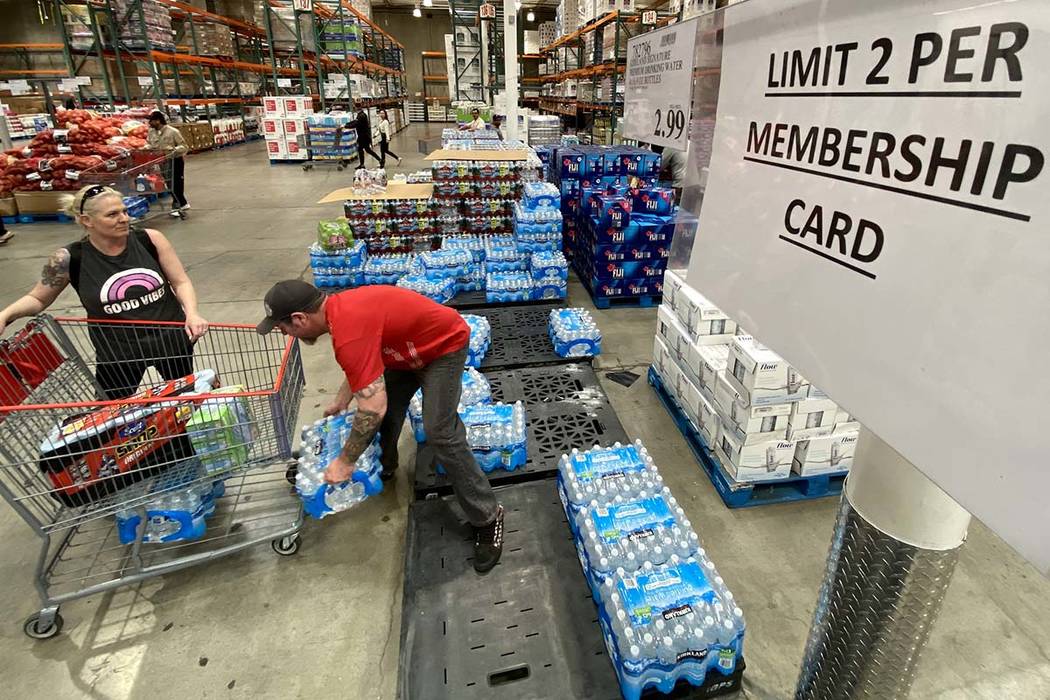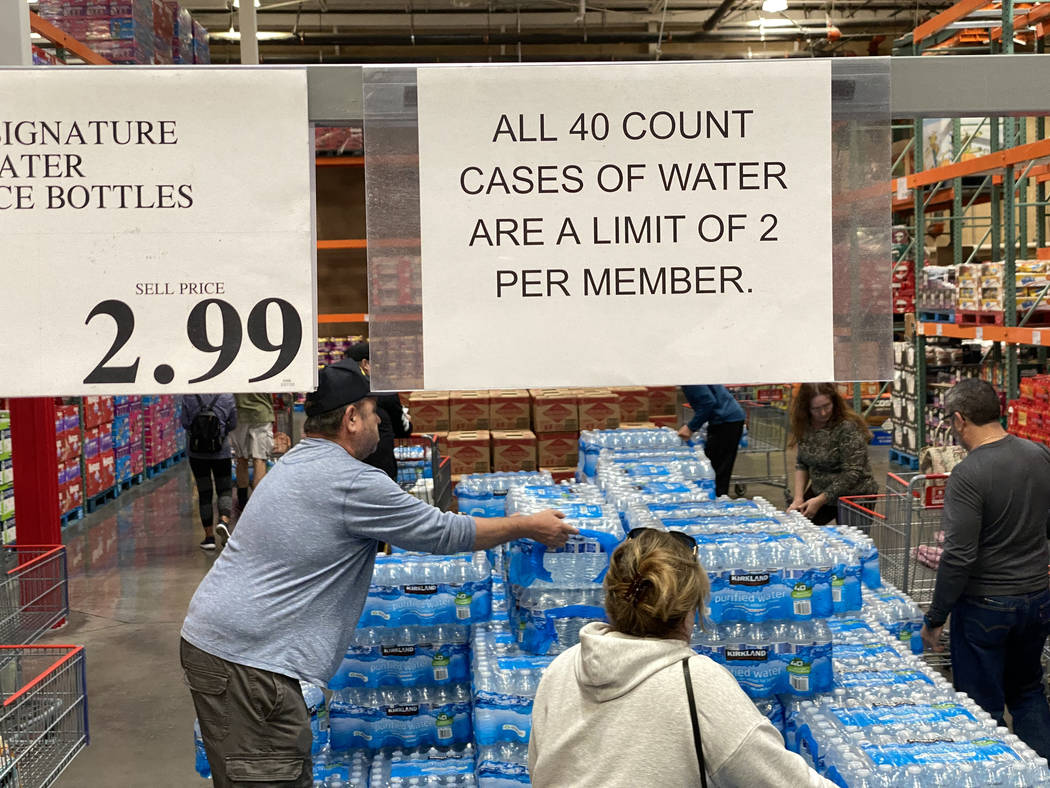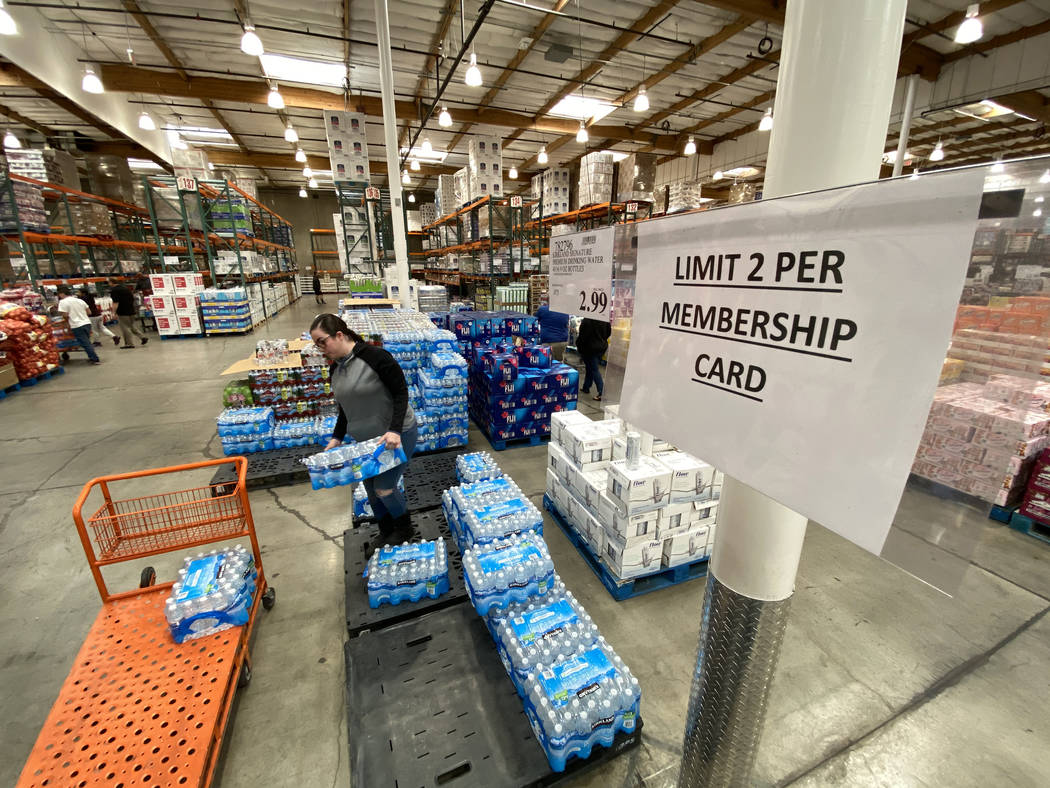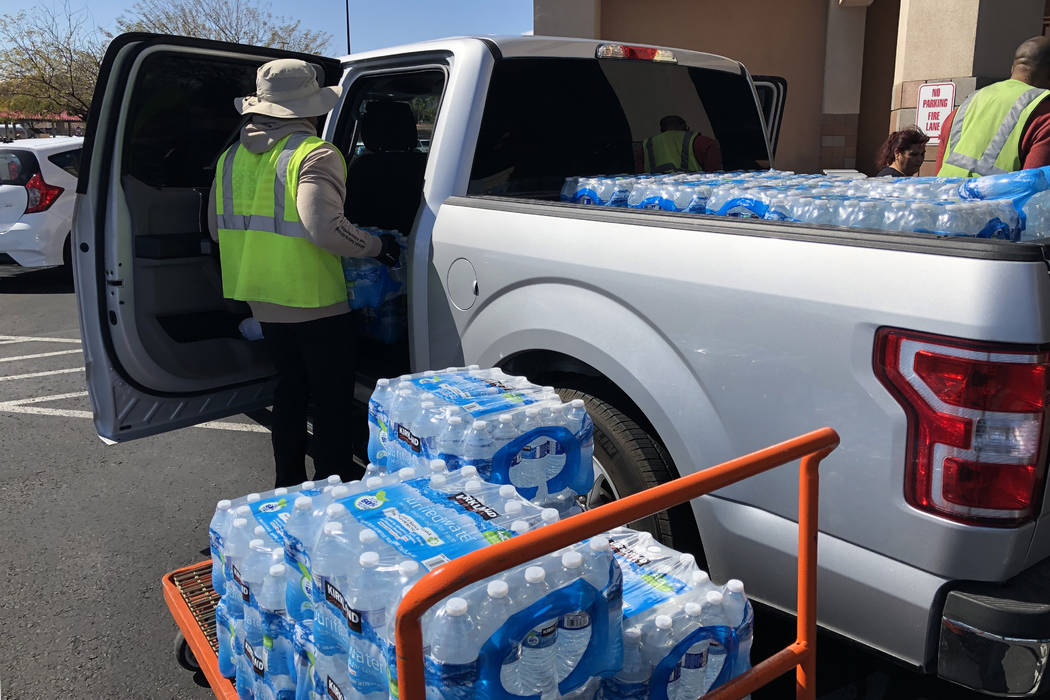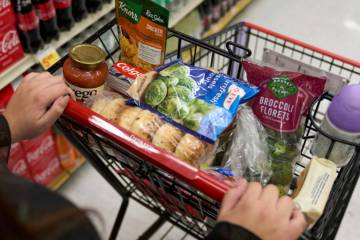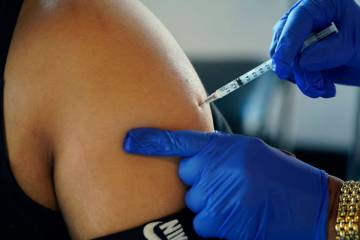Why the invisible coronavirus threat triggers hoarding behavior
In the days following the first reported coronavirus case in Nevada, a strange side effect of the new illness emerged: the stockpiling of toilet paper and cases of water.
Restless and unnerved, people in Southern Nevada began hoarding the supplies, clearing out entire shopping aisles and forcing some stores to set limits on items per customer.
“DUE TO INCREASE DEMAND WATER IS LIMITED TO 10 UNITS PER MEMBER,” read one sign at a Costco in Summerlin.
Though impractical, psychologists and mental health experts say this extreme behavior largely comes from a place of uncertainty over something that cannot physically be seen, and is just one of many ways that public anxiety surrounding COVID-19 is playing out.
“With a virus, it can be really scary because we can’t see it,” Lynn Bufka, senior research and policy director at American Psychological Association, told the Review-Journal this week. “But this response we’re seeing, the panicked shopping, is people trying to gain control of an unknown situation.”
The flu-like symptoms from infection by the coronavirus are generally mild, and The World Health Organization, which has declared the outbreak a global pandemic, says the virus kills between 3 and 4 percent of the people it infects. Some other estimates point to a lower range.
Concern over the respiratory disease continues to derail many parts of everyday life. Since Nevada’s first case was reported on March 5, some restaurants and buffets on the Strip have temporarily closed, conventions and major sporting events have been canceled or postponed, and UNLV and UNR have decided to move to online-only instruction starting March 23.
‘A distorted idea’
As the number of confirmed cases and deaths rises, the complete clinical picture of the illness remains unknown — setting off what experts have characterized as an emotional response to a public health crisis.
“When we’re looking at something unknown, for which there are few definitive answers and inadequate tests, it’s going to set off our own internal defenses,” said Las Vegas-based psychiatrist Gregory Brown, who’s been practicing for more than two decades. “This is built into our nervous system, so even though this is not like running from a wildebeest or fighting off a saber-toothed tiger, we’re activating the same things in our bodies and minds.”
What’s important is how a person reacts to the anxiety.
“This is where people really start to have a distorted idea about what’s needed to survive,” explains clinical psychologist Stephen Benning.
Benning, also an associate professor of psychology at UNLV, suggests that the public take a step back, and, instead of hoarding supplies, create a “carefully considered” list — or even a spreadsheet — of goods needed to keep the household running.
“If you were preparing to quarantine, for instance, you might think to get a lot of canned food,” Benning said. “Everyone acting in this selfish way to maximize their survival leads to a drastic shortage of resources for everyone.”
Anxiety vs. reality
Benning hopes to see more stores set limits on supplies.
“Some might think the stores are encouraging panic by limiting things, but I would say, ‘Have you seen the shelves?’” he said. “The hope is these limits will at least slow the flow of goods so stores can restock in a timely manner.”
Bufka, the senior director at the American Psychological Association, says there’s no reason to be outright terrified but cautions that the public should take the outbreak seriously.
“Humans can manage a lot, but when we’re scared, we tend to underestimate ourselves and to overestimate how real a threat is,” she said. “Just remember to have a realistic assessment of the threat level, and then determine what parts you have a capacity to do something about.”
And that something could be as simple as washing your hands more frequently, she says, or staying home if you’ve potentially been exposed to the virus.
The Centers for Disease Control and Prevention has recommended that those who may have been exposed stay home for at least 14 days after the last known day of exposure. And maintaining a healthy routine during that period of physical isolation, both Bufka and Benning say, is equally important as prevention and preparation:
— Maintain a regular work schedule as best as possible. What work can be done from home?
— Exercise regularly, and stay active even if you’re stuck inside.
— If you live in a smaller space, move furniture around to create more room for physical activities. This also allows for a change of scenery.
— Make sure to get some fresh air by opening the windows.
— Stay in touch with family and friends via video chat or other channels “to allow a deep and meaningful conversation,” Benning said, because there’s risk of inadvertently “isolating yourself completely” when physically distancing yourself from others.
“As this continues to unfold, I think we’re all learning that this is something we want to take seriously, but what we don’t want is anxiety to dictate our actions,” Bufka said.
Contact Rio Lacanlale at rlacanlale@reviewjournal.com or 702-383-0381. Follow @riolacanlale on Twitter.
Recommendations if your home quarantined
The Centers for Disease Control and Prevention has recommended that those who may have been exposed to the coronavirus stay at home for at least 14 days after the last known day of exposure. Psychologists say maintaining a healthy routine during those two weeks of isolation is equally important as prevention and preparation:
— Maintain a regular work schedule as best as possible. What work can be done from home?
— Exercise regularly, and stay active even if you're stuck inside.
— If you live in a smaller space, move furniture around to create more room for physical activities. This also allows for a change of scenery.
— Make sure to get some fresh air by opening the windows.
— Stay in touch with family and friends via video chat "to allow for a deep and meaningful conversation," clinical psychologist Stephen Benning says, because there's risk of inadvertently "isolating yourself completely" when physically distancing yourself from others.



